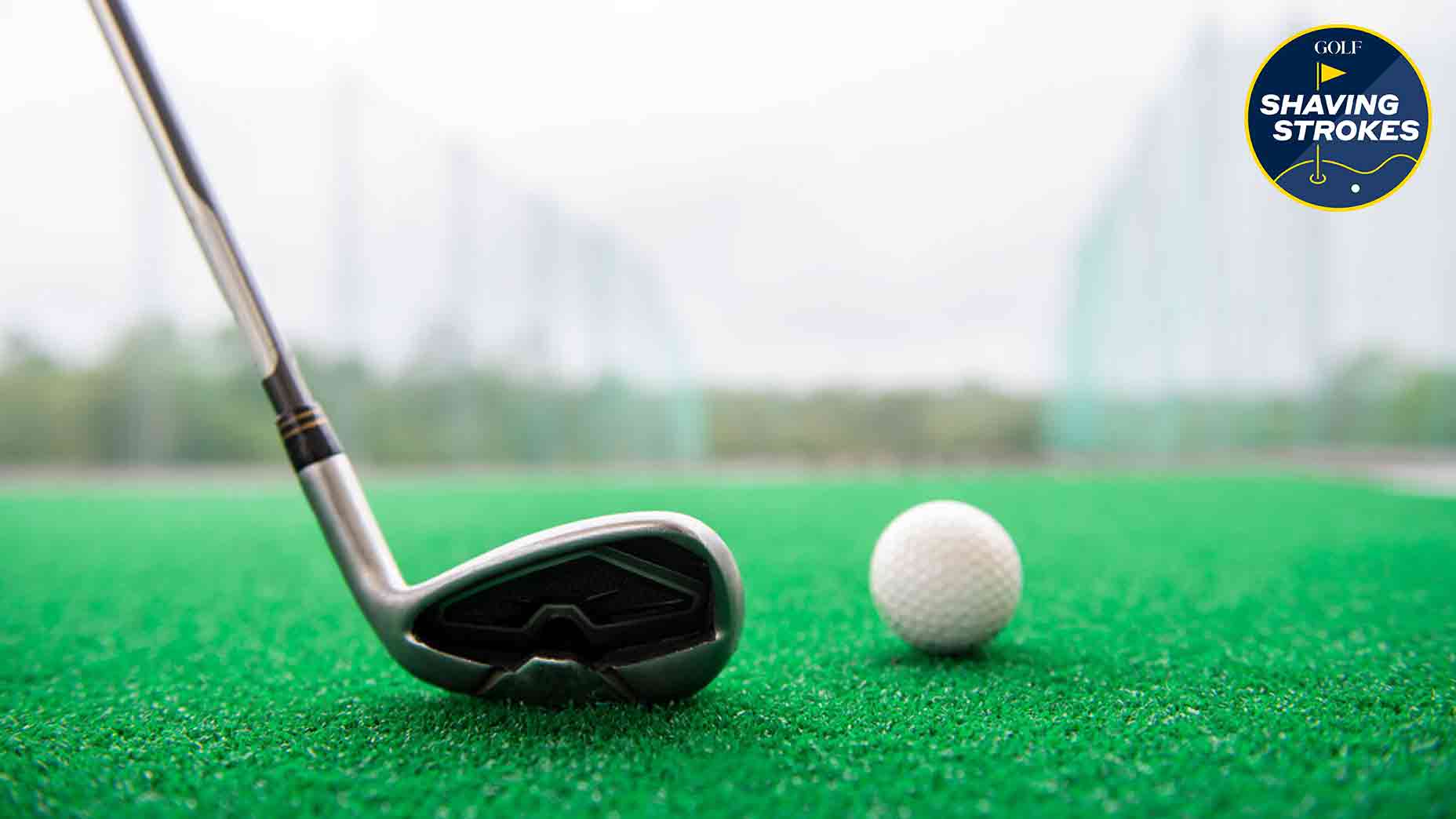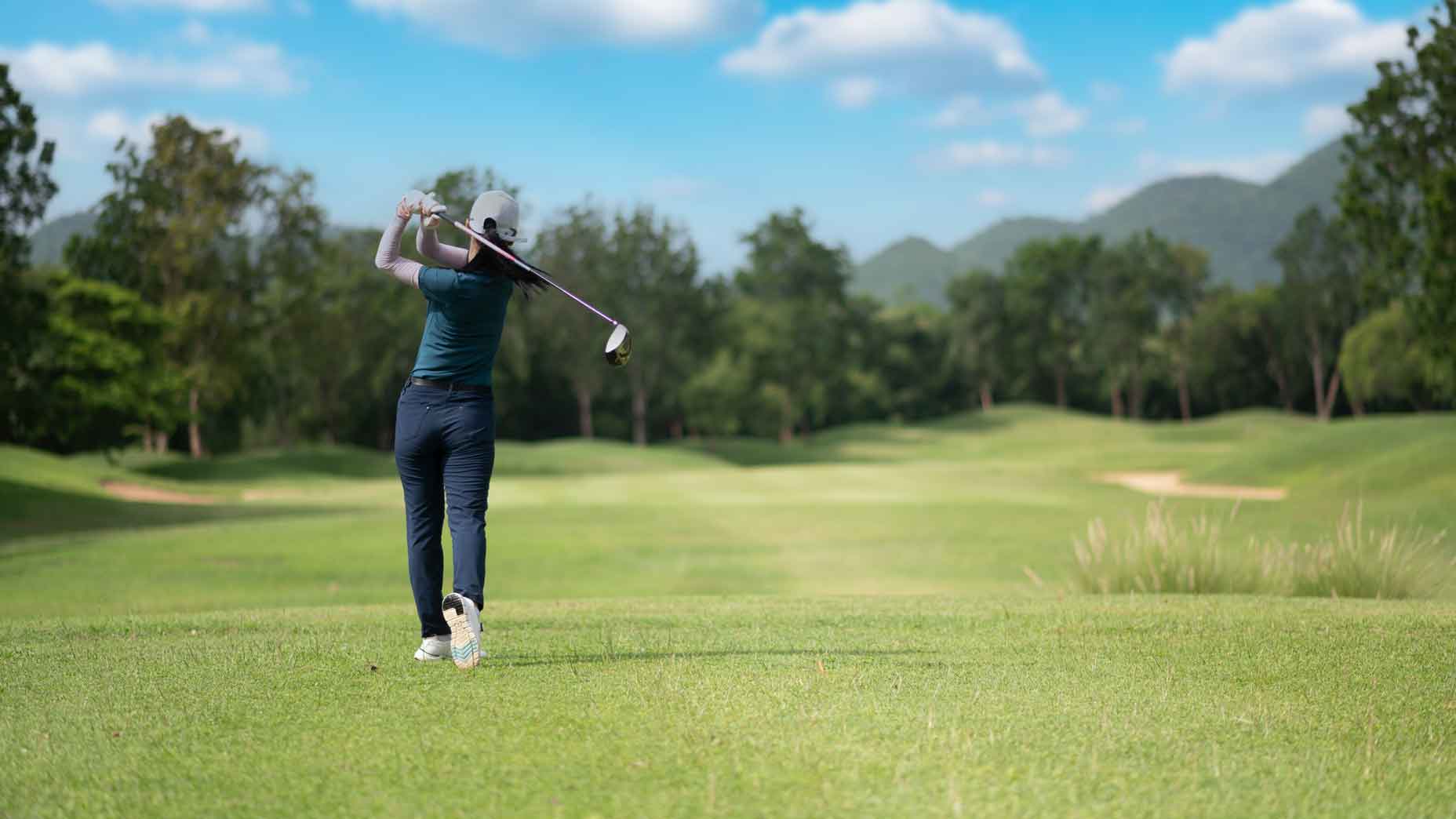Welcome to Shaving Strokes, a GOLF.com series in which we’re sharing improvements, learnings and takeaways from amateur golfers just like you — including some of the speed bumps and challenges they faced along the way.
I’m not going to beat around the bush here: I hate hitting balls off mats.
Problem is, I live in Seattle, where — you may have heard — it rains a lot, so there aren’t many real grass ranges available unless you belong to a country club or the weather gets nicer and courses make them available.
My beef with mats is simple: They’re too forgiving, and often produce a better result from a mishit than what grass would. This is because of the rubbery bounce beneath the mats, which allows the club to still glide across at impact rather than dig like it would on real turf.
3 secrets for practicing off of driving range mats, per a Top 100 TeacherBy: Nick Dimengo , Jim Murphy
Which got me thinking: How different is hitting off a mat compared to real grass? For answer, I turned to GOLF Top 100 Teacher Kevin Sprecher. So take a look below to see why mats do have some advantages — but why it’s tricky to translate some of them to the course.
How different is practicing on golf mats vs. real grass?
According to Sprecher, he hears numerous comments from players when practicing on golf mats.
“Golfers often say to me that they think practicing on mats is like cheating, or that it’s easier, or that they struggle going from golf mats to grass,” Sprecher says. “They’re mostly correct.”
But not totally. Here are both the disadvantages and advantages to practicing on mats.
1. Hitting off golf mats allows for a perfect lie
Hitting off mats is like having the ball teed up.
As a teacher, I like my students to learn a new move on a mat, such as a swing change, because they tend to worry less about hitting it fat or getting the ball in the air, and more about the swing change itself. Mats do mask fat shots, as the club will bounce into the ball and make the ball flight decent. But we can hear that the contact was poor and can feel it being fat.
2. Mats are a more efficient practice spot
On real grass, you often have to move around since the practice areas get chewed up so much, which obviously doesn’t happen on mats. This makes hitting balls go faster, which is good for those quick range sessions.
But I always suggest practicing on grass, because it’s what we play on during a round. We don’t always have perfect lies on the course, so the ball can sit down and the ground can be firm, soft or uneven.
3. Hitting on a golf mat is emotionally comforting
Golf is such a psychological and mental game, so hitting off a mat can be comforting for players who just need to see some positive results or help building their confidence. They don’t worry about the ground, and thus swing more freely. But they will need to eventually transition to grass, because that’s where the game is played.
4. Ball contact is different
I find that the sound the club makes when hitting a mat is helpful for many students. Hearing a “click then thump” indicates ball-first contact, whereas hearing a “thump then click” leads to a fat shot. This biofeedback can be helpful during the learning process.
On the other hand, hitting on grass and hitting it fat can be a bit demoralizing for some people, which can lead to frustration and the return of bad habits when not seeing the results they desire.
5. Golf mats can be slippery
The best golfers in the world understand how to use their feet in the swing. While your feet can slip anywhere, it tends to happen more on mats since they don’t properly drain or dry like grass would.
Some mats are also squishy, so they don’t provide good stability, which makes it challenging for golfers to use their feet properly. Hitting on grass tends to be a bit more stable, and provides a firmer base.
6. Hitting off golf mats will reduce the ball’s spin
Believe it or not, a mat can impact the shot by up to 1,000 rpm, which also increasing the launch by 1-2 degrees. Those are dramatic differences, which makes it even more essential to work with a launch monitor. “Normalizing” the data only affects the atmospheric conditions, not the ground conditions.
There are some benefits to practicing on golf mats, but, ultimately, the game is played on grass and players must practice where they play. Mats are here to stay — as many places utilize them since they’re durable and a cheaper option — so if you can’t find a grass range, it’s important to understand their differences.












